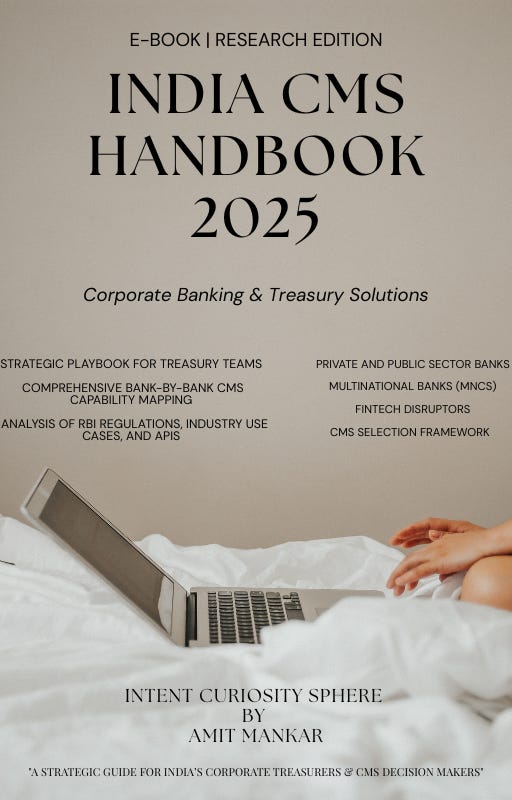Chapter I: Understanding CMS – The Evolution & Why It Matters Now
From branch banking to API-first treasury infrastructure — a look at how India’s CMS is transforming.
Treasury is no longer a backend accounting function — it’s the new frontier of fintech, automation, and strategic cash control.
In this first chapter of the India CMS Handbook 2025, we decode how CMS (Cash Management Services) evolved from branch-based utility to a mission-critical digital stack for NBFCs, corporates, startups, and PSUs.
What You’ll Learn in Chapter I:
What CMS really means today (beyond collections & payouts)
The four stages of CMS evolution in India
Key drivers of change: API adoption, ERP integration, and client-side innovation
The building blocks of a modern CMS platform
CMS Redefined: From Pipe to Platform
Traditional CMS meant bulk payments, cheque pick-up, and branch deposits. Today’s CMS is:
API-native
ERP-embedded
Event-triggered
Escrow-ready
Dashboard-driven
CMS is no longer just a bank’s offering — it’s a platform layer integrated across tech stacks and customer journeys.
The Four-Stage Evolution of CMS in India
Core Capabilities of Modern CMS Platforms
Smart Collections – VA, UPI, BBPS, QR, POS
Intelligent Payouts – Scheduled, rule-based, multi-mode
Reconciliation Automation – T+0 mapping, webhook MIS
Treasury APIs – Plug-and-play with SAP/Tally/Zoho
Escrow Management – Sector-based logic, VPA-based structuring
💡 Key Takeaway:
In 2025, CMS isn’t just about processing transactions — it’s about controlling business cashflows in real time, with intelligence and compliance built-in.







